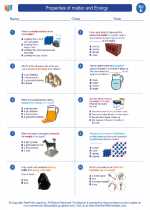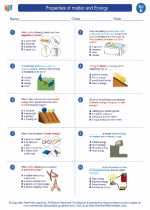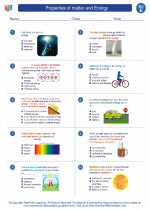Properties of matter and Energy -> conductors
Conductors
Conductors are materials that allow the flow of electrical current through them. These materials have loosely bound electrons that are free to move, allowing them to carry the electric charge from one point to another. Conductors are widely used in electrical and electronic devices, as well as in various industrial applications.
Characteristics of Conductors
Conductors possess the following characteristics:
- High Electrical Conductivity: Conductors have a high electrical conductivity, meaning they offer low resistance to the flow of electric current.
- Free Electrons: The atoms in a conductor have electrons that are not tightly bound to the nucleus, allowing them to move freely.
- Good Thermal Conductivity: Conductors also tend to have good thermal conductivity, allowing them to transfer heat effectively.
- Malleability and Ductility: Many conductors, such as metals, are malleable and ductile, meaning they can be shaped into different forms without breaking.
Examples of Conductors
Some common examples of conductors include:
Applications of Conductors
Conductors are used in various applications, including:
- Electrical wiring and cables
- Electronic circuits and components
- Power transmission lines
- Electrical motors and generators
- Industrial machinery
Study Guide
Here are some key points to remember about conductors:
- Define conductors and explain their role in allowing the flow of electric current.
- Discuss the characteristics of conductors, including high electrical conductivity and the presence of free electrons.
- List and describe examples of common conductors, such as copper, aluminum, and silver.
- Explain the applications of conductors in various fields, such as electrical and electronic devices, power transmission, and industrial machinery.
Understanding the properties and applications of conductors is essential for comprehending various aspects of electricity and its practical use in everyday life.
.◂Science Worksheets and Study Guides Fifth Grade. Properties of matter and Energy
Study Guide Properties of matter and Energy
Properties of matter and Energy  Worksheet/Answer key
Worksheet/Answer key Properties of matter and Energy
Properties of matter and Energy  Worksheet/Answer key
Worksheet/Answer key Properties of matter and Energy
Properties of matter and Energy  Worksheet/Answer key
Worksheet/Answer key Properties of matter and Energy
Properties of matter and Energy  Vocabulary/Answer key
Vocabulary/Answer key Properties of matter and Energy
Properties of matter and Energy  Vocabulary/Answer key
Vocabulary/Answer key Properties of matter and Energy
Properties of matter and Energy 

 Worksheet/Answer key
Worksheet/Answer key
 Worksheet/Answer key
Worksheet/Answer key
 Worksheet/Answer key
Worksheet/Answer key
 Vocabulary/Answer key
Vocabulary/Answer key
 Vocabulary/Answer key
Vocabulary/Answer key

The resources above cover the following skills:
PHYSICAL SCIENCE (NGSS)
Matter and Its Interactions
Students who demonstrate understanding can:
Develop a model to describe that matter is made of particles too small to be seen.